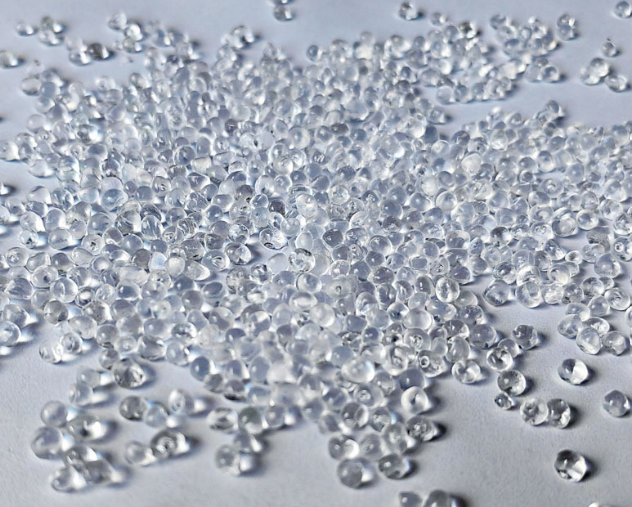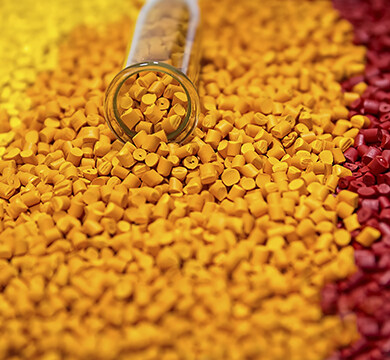Ошибка формата электронной почты
emailCannotEmpty
emailDoesExist
pwdLetterLimtTip
inconsistentPwd
pwdLetterLimtTip
inconsistentPwd

Offer Technical Support and Customized Solutions
The company is committed to creating new and improved plastic materials to meet the evolving demands of the market.

Do you really understand the differences between TPE, TPR, and TPU?
In the field of plastics and rubber, TPE, TPR, and TPU are three common thermoplastic elastomers widely used across various industries due to their excellent elasticity, durability, and processability. Although their names sound similar, there are significant differences in composition, performance, and application. This article will help you understand these core differences and guide you in selecting the right material for your needs.
-
TPE (Thermoplastic Elastomer)
-
Definition: TPE is a material that combines the elasticity of rubber with the processability of plastic, typically modified from SEBS or SBS.
-
Features:
-
Good elasticity and softness, can be reprocessed multiple times
-
Environmentally friendly and non-toxic, compliant with ROHS, REACH regulations
-
Suitable for injection molding, extrusion, blow molding, and other processes
-
-
-
TPR (Thermoplastic Rubber)
-
Definition: TPR is a subtype of TPE, primarily based on SBS, offering a texture closer to traditional rubber.
-
Features:
-
Softer feel with excellent elasticity
-
High wear resistance and anti-slip properties
-
Commonly used in shoe soles, tool handles, and toys
-
-
-
TPU (Thermoplastic Polyurethane)
-
Definition: TPU is a polyurethane-based elastomer known for its exceptional mechanical properties and chemical resistance.
-
Features:
-
High wear resistance, oil resistance, and low-temperature performance
-
High transparency, suitable for clear or semi-transparent products
-
Widely used in automotive parts, protective cases, and medical devices
-
-
| Properties | TPE | TPR | TPU |
|---|---|---|---|
| Main Component | SEBS, SBS | SBS | Polyurethane |
| Elasticity & Feel | Moderate to high, good elasticity | Softer, superior elasticity | Wider hardness range, stronger mechanical properties |
| Wear Resistance | Moderate, suitable for everyday use | High, ideal for anti-slip products | Excellent, suitable for high-friction environments |
| Weather Resistance | Average, not suitable for prolonged outdoor use | Weak, affected by UV and heat | Superior, UV and chemical resistant |
| Transparency | Adjustable from clear to opaque | Mostly opaque | High transparency, suitable for clear products |
| Processing Methods | Injection molding, extrusion, blow molding | Mainly for injection molding | Injection molding, extrusion, calendering, coating |
| Environmental Impact | Recyclable, meets environmental standards | Recyclable, eco-friendly | Recyclable, though more complex to process |
| Applications | Automotive parts, electronics, daily products, medical devices | Shoe soles, toys, tool handles, household appliances | Automotive components, electronics, medical devices |
-
Based on Performance Requirements
-
If you need high wear resistance, oil resistance, and weather resistance, TPU is the best choice, suitable for applications requiring durability and strength.
-
If you need softness, good elasticity, and easy processing, both TPE and TPR are excellent choices, particularly for consumer goods and daily-use items.
-
-
Based on Processing Methods
-
TPE and TPR are easy to process and suitable for large-scale injection molding and extrusion.
-
TPU requires higher processing temperatures and is more suitable for high-precision, complex structures.
-
-
Based on Cost and Environmental Considerations
-
TPE and TPR offer lower production and processing costs and comply with multiple environmental standards, making them suitable for projects emphasizing cost-effectiveness and sustainability.
-
Although TPU is more expensive, its superior performance and durability make it ideal for high-value and specialized applications.
-
As environmental regulations become stricter and the demand for high-performance materials grows, the use of TPE, TPR, and TPU continues to expand. Key growth areas include:
-
New Energy Vehicles: Lightweight components, wear-resistant parts, sealing strips
-
Consumer Electronics: Flexible protective covers, earphone cables, wire sheathing
-
Medical & Healthcare: Medical tubing, device components, sealing rings
-
Eco-friendly Materials: Development and promotion of bio-based TPE and biodegradable elastomers
Each material—TPE, TPR, and TPU—has unique advantages. Choosing the right one depends on the specific usage environment, performance requirements, and processing needs. Understanding these differences allows for more precise decision-making and helps improve product quality and market competitiveness.
If you have further questions about TPE, TPR, or TPU materials or need assistance in selecting the right material, feel free to contact us. We are here to provide professional solutions and technical support.

